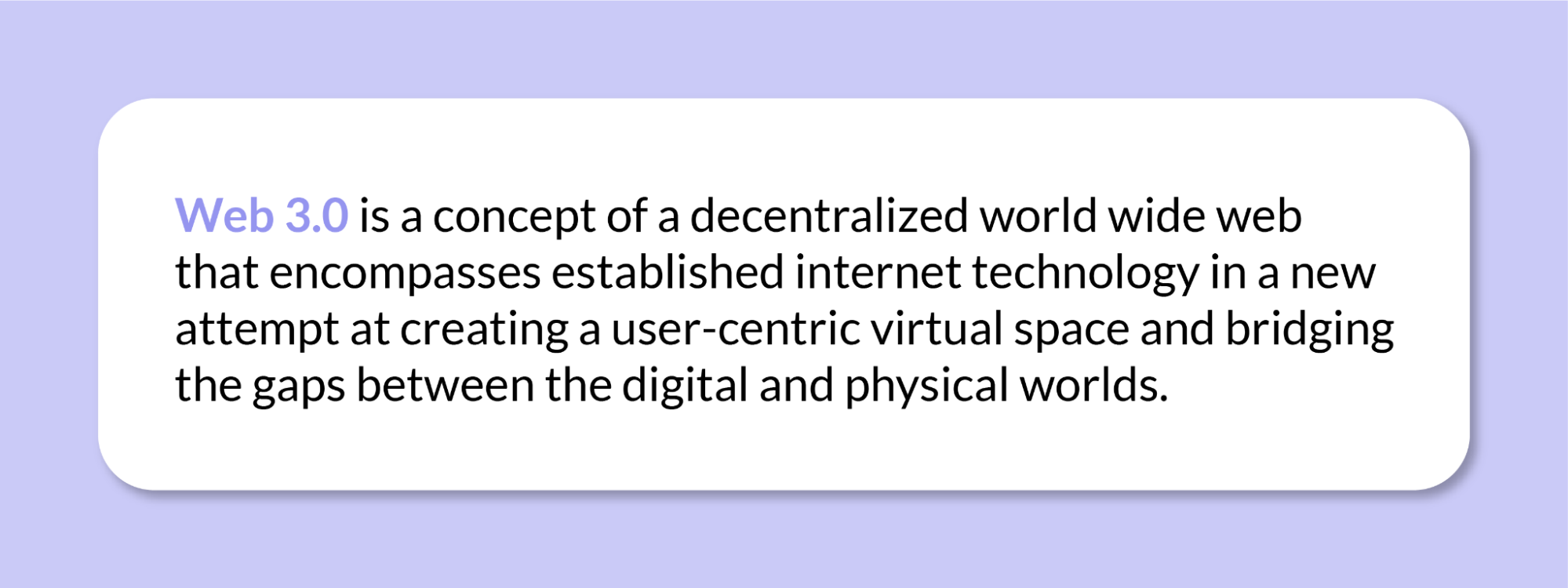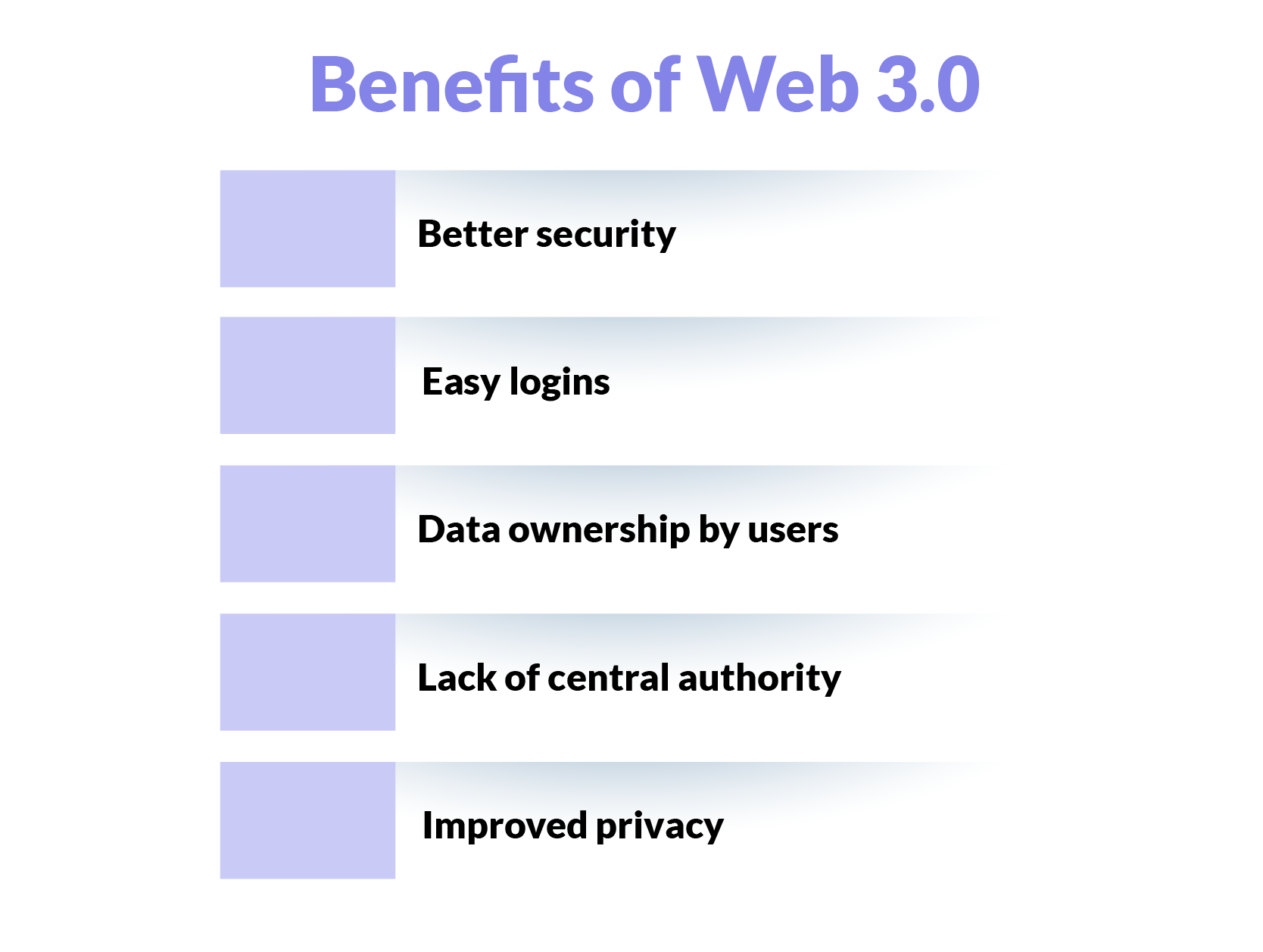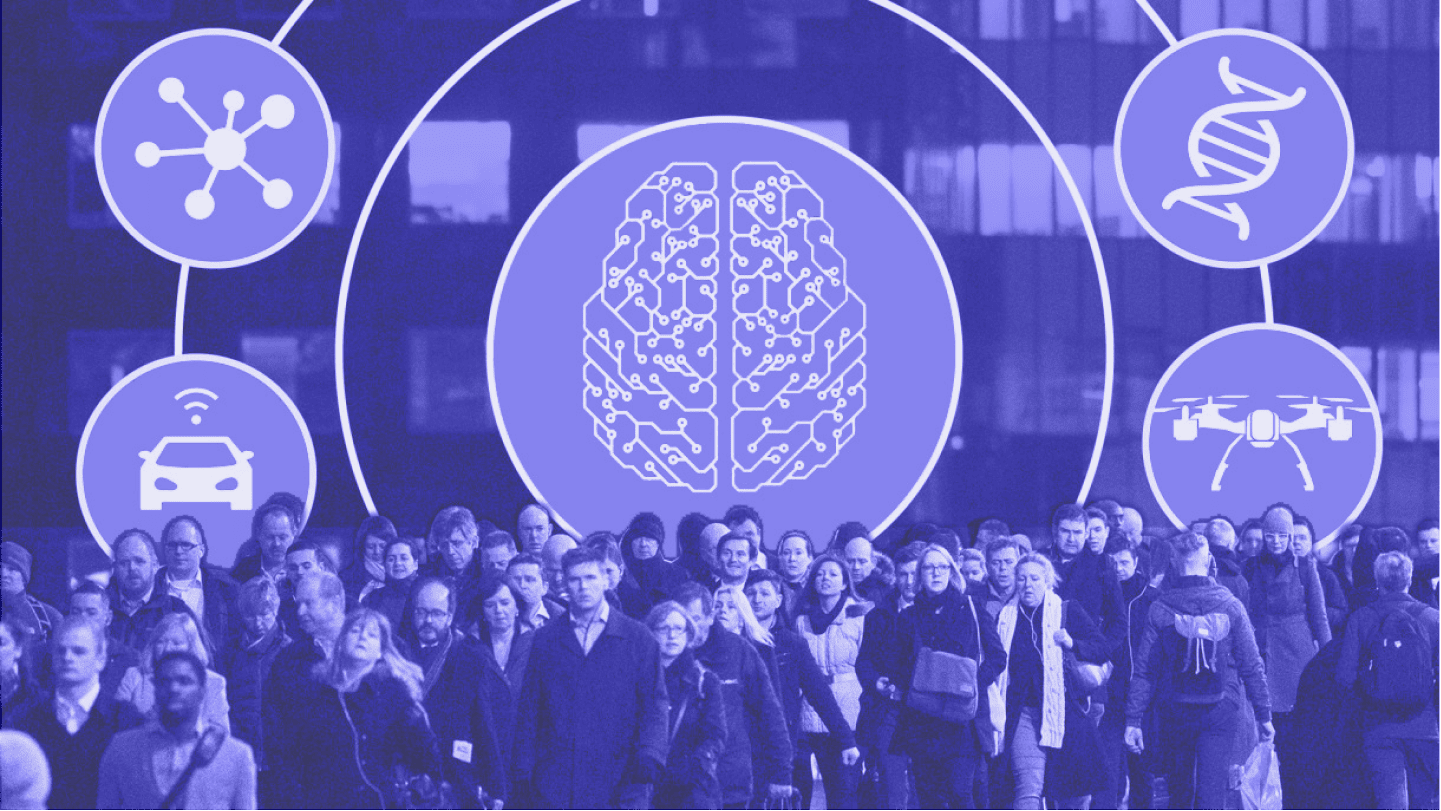There is a lot of skepticism about Web 3.0 being the next evolution of the internet, with many entrepreneurs claiming it is a marketing buzzword. This may come from the need for more understanding of how Web 3.0 works and how it can impact businesses.
With the rise of Web 3.0, businesses have a unique opportunity to capitalize on the latest technological advancements and grow. They can stay ahead of the curve and compete with global players.
This article shows the benefits of Web 3.0 for businesses and entrepreneurs and some critical areas where they can achieve success.
In this article:
What Is Web 3.0?
Web 3.0 is a concept of the world wide web that encompasses established internet technology in a new attempt at creating a user-centric virtual space and bridging the gaps between the digital and physical worlds. It leverages old and new technologies, including blockchain, natural language processing, artificial intelligence, and tokens-based economics.
Web 3.0 is also called read-write-execute, semantic web, and spatial web.
The new internet paradigm strives to have the web decentralized and end the phenomenon of walled gardens like Facebook and Instagram that dictate the rules by which users can act on their centralized platforms.

Evolution of the World Wide Web From 1.0 to 3.0
To understand where Web 3.0 comes from, let's trace back to the previous iterations of the world wide web:
- Web 1.0, also called syntactic or read-only web, is the era (1990–2000) in which you had to have programming skills to share information over the internet, and ordinary users could only consume it.
- Web 2.0, also referred to as read-write or social web, is the next generation (2000–2010 and continues even now). Basically, it's when blogs and WordPress websites started appearing and allowed ordinary internet users to interact with each other and produce content.
Even though the term was coined in 2006 by a New York Times reporter, the paradigm shift happened around 2010. If you look at the Gartner Hype Cycle of technologies, in 2022, Web 3.0 will be almost at its peak and will require another 5 – 10 years to reach its plateau of productivity.

Examples of Web 3.0 Apps
Even though Web 3.0 isn't a fully-established technology yet, some highly user-centric applications convey its principles:
- Siri – voice recognition. Previously, the app could perform basic tasks and follow simple directions, but now it has become a personal assistant that can use search engines more intelligently and produce more meaningful results.
- Wolfram Alpha – computational knowledge engine. The platform can answer factual questions in scientific fields. Now it can also access data from other applications to provide more accurate responses.
- Steemit – blockchain technology. It's a social network where users can earn cryptocurrency to contribute to the platform. Within the realm of Web 3.0, it offers a safe environment for creating content and making crypto.
- e-Chat – Web 3.0 blockchain. It's a social media network and messenger that provides a safe space for exchanging information and crypto.


Thank you for Subscription!
Key Features of the Semantic Technology
Now that you have a basic understanding of Web 3.0, let's examine some of the valuable features it can offer.
Easy Logins With Better Security
Web 3.0 offers to store digital assets in a blockchain, a digital ledger that makes your data encrypted, anonymous, and more durable against hacker attacks and data breaches.
Full Ownership and Control of Data for Users
Policies like the GDPR offer some semblance of control over data generated by users. But, thanks to blockchain, users can decide what they want to share with advertising firms or corporations.
Lack of Authority and Decentralization
In Web 3.0, no central authority governs who on the internet can access a website based on their gender, location, and other demographic features.
Better Privacy for Internet Users
Decentralization, data privacy, and data encryption side with end users to break the monopoly and full control tech companies have over user data in the digital world. This will result in fewer privacy intrusions since consumers can choose how their own data is shown.

How Will Web 3.0 Impact Business in Different Industries?
Artificial intelligence and machine learning are at the center of Web 3.0, as these technologies can help big and small businesses better understand their customers and provide a truly personalized user experience. Let's look at the competitive advantage opportunities of Web 3.0 in business.
Web 3.0 and FinTech
Thanks to blockchain, open financial protocols, the lack of a centralized authority, and other emerging technologies, Web 3.0 can offer the following advantages to financial institutions and their business processes:
- Fewer server errors – organizations can store personal data in distributed nodes rather than centralized servers. Since there will be no seizures in accessing information, they will be able to provide customers with uninterrupted service.
- More efficient and faster transactions – users will be able to perform payments and provide loans and other digital services without a third party, which increases transparency, security, and speed of transactions.
- Improved customer journey – thanks to AI and ML, organizations can automate data processing and adapt to user needs more efficiently.
Some financial businesses operate with Web 3.0 concepts already. For example:
- The Royal Bank of Canada – thanks to deep learning, the bank managed to reduce customer support demand.
- Bitcoin Suisse – the company, offers decentralized lending services using ETH as collateral.
Web 3.0 and EdTech
EdTech wasn't even a thing during Web 1.0, but now this technology is adapting the learning and teaching processes to fit today's needs better.
- Evolved educational process – students can participate in digital content creation rather than being ordinary observers or knowledge consumers.
- Customized search – Web 3.0 will enable a more intelligent search with tailored content recommendations for students pursuing a particular subject.
- Decentralized nature of learning – blockchain technology will enable students to build their own portfolio of courses, projects, and internships without handing the ownership of these credentials to a single entity, such as a university.
- Micro schools – Web 3.0 will enable an interactive homeschooling process that favors active participation.
Everything you need to know
Get ready to Web 3.0 today with our advice. Geniusee collected all necessary information about custom software development by industries. Complete guides by our top experts.
Web 3.0 and Retail
While Web 2.0 offers user-centric interactions, such as order management and some semblance of personalization with tailored recommendations, Web 3.0 promises to create genuinely customer-centric e-commerce for any retail business or supply chain.
- Personalization based on AI, big data, and ML – thanks to artificial intelligence development and data analytics, businesses can provide better value to customers and improve the product–market fit.
- New business models – Web 3.0 will enable businesses to offer customized subscriptions and build longer-lasting relationships with customers.
- Safe P2P payments – the distributed nature of blockchain technology helps support safer transactions, minimizing third-party threats.
- Immersive shopping with extended reality – shoppers can bring the physical world into the digital space; for example, try on or try using items thanks to virtual reality, which should minimize product returns for the retail business.
Web 3.0 and Real Estate
Real estate might not be the most prominent industry that Web 3.0 can transform, yet there is room for blockchain and financial technology to innovate this market.
- New investment avenues – Web 3.0 technologies allow people to use NFTs to acquire real estate, which happened to digital music. Token holders monetized $690 million of real estate in 2020 and over $14 billion in 2021.
- Decentralized finance (DeFi) – thanks to blockchain technology and smart contracts, Web 3.0 can make the investment process smoother.
- Crypto payments – Web 3.0 will allow people to make payments for real estate using specific cryptocurrencies.
Web 3.0 and MedTech
Even after all the efforts to digitize the health industry during the pandemic, Web 2.0 still causes problems for medical technology. Web 3.0 is adamant about solving them, shifting the center of attention from companies to patients.
- Patient-owned EHRs – Web 3.0 technology can return health data ownership to the patients, provide safety for sensitive data, and secure user privacy.
- Improved preventive care – thanks to AI and the Internet of Things, MedTech and wearables will help patients observe health indicators, minimizing the health system workload.
- Better access to health-related information – the semantic web technologies will enable quick access to patient information, such as previous treatment history, in an emergency.
- Improved verifiability – confirming and verifying records at the source will be easier without intermediaries.
Are you ready for Web 3.0 challenges?
Make sure that your company is ready to implement best practices and grow in the future by checking your BA-health status.
How Can a Company Use Web 3.0 Technologies to Gain a Competitive Advantage?
Web 3.0 is a revolutionary change in business, and understanding how it works is crucial for entrepreneurs, companies, and corporations. You must make your business decisions carefully, keeping in mind that the future is here and continuously renewing.
With Web 3.0, companies can operate freely, scale faster, and provide a better experience for users. On the other hand, Web 3.0 can provide a more transparent and secure user environment, improving personalization, customer loyalty, and retention.
If you're considering dipping your toes into the future, contact Geniusee specialists to discuss your ideas for implementing Web 3.0 or any other new technology.





















